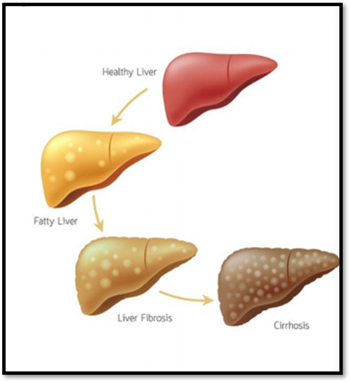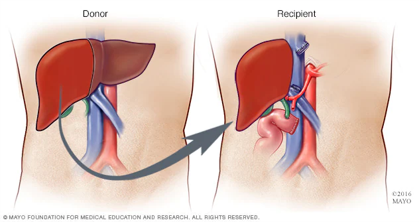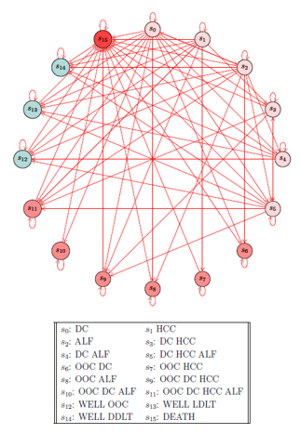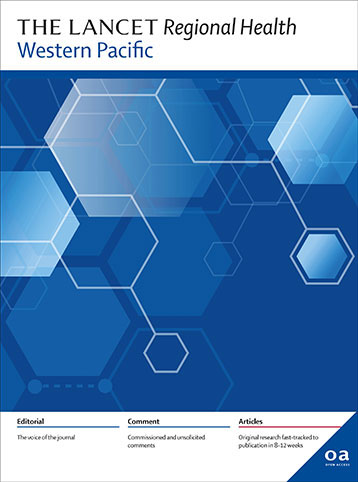
FIG. 1:
Stages of Liver Damage |
Reasons for liver transplant include:
i) Fibrosis or cirrhosis arising from an unhealthy liver. Decompensated cirrhosis (DC) refers to an acute deterioration in liver function in a patient with cirrhosis
ii) Acute and acute-on-chronic liver failure (respectively: ALF and ACLF)
iii) Hepatocellular carcinoma (HCC) or liver cancer
|
There are two possibilities for liver transplant:
OPTION 1: Deceased donor liver transplant (DDLT)
OPTION 2: Living donor liver transplant (LDLT)
|

FIG. 2:
Liver Transplant
Image Source: Mayo Clinic |

FIG. 3:
Allowable State Transitions for
Liver Transplant Patients |
We must first identify the following:
i) The unique initial states of all patients on the liver transplant waitlist (e.g. DC, ALF, ACLF, HCC, etc)
ii) The possible states into which these patients can transition
iii) Death (DEATH) as the sole absorbing state of our model
Thereafter, we must accept the Markovian Assumption:
There is no memory of prior states and each transition depends only on the current state
Last but not least, we must identify all allowable state transitions
|
Markov transition probabilities are computed relative to an anonymized dataset of liver transplant waitlist patients from:
i) NUH (Singapore)
ii) SGH (Singapore
iii) Queen Mary Hospital (Hong Kong)
|

FIG. 4:
Logos of Hospital Partners |

FIG. 5:
The Lancet Regional Health - Western Pacific |
Publication:
'Impact of COVID-19 on Liver Transplantation in Hong Kong and Singapore: A Modelling Study'
Full Citation:
Eunice Xiang-Xuan Tan, Wei Liang Quek, Suryadi, Haroun Chahed, Shridhar Ganpathi Iyer, Prema Raj Jeyaraj, Guan-Huei Lee, Albert Chan, Stephanie Cheng, Jan Hoe, Ek Khoon Tan, Lock Yue Chew, James Fung, Melvin Chen, Mark D. Muthiah, & Daniel Q. Huang. 'Impact of COVID-19 on Liver Transplantation in Hong Kong and Singapore: A Modelling Study.'
The Lancet Regional Health - Western Pacific, Vol. 16, 2021, 100262.
|